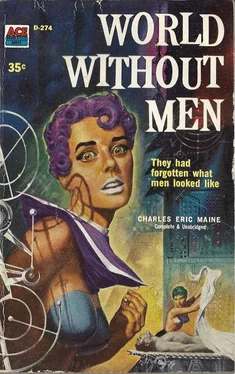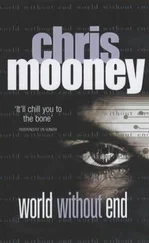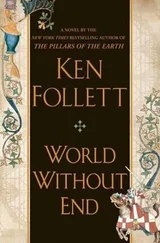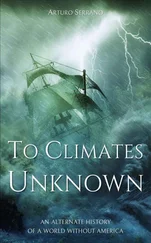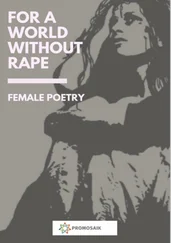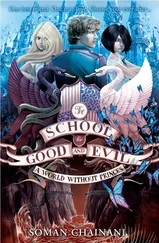Charles Maine - World Without Men
Здесь есть возможность читать онлайн «Charles Maine - World Without Men» весь текст электронной книги совершенно бесплатно (целиком полную версию без сокращений). В некоторых случаях можно слушать аудио, скачать через торрент в формате fb2 и присутствует краткое содержание. Город: New York, Год выпуска: 2013, Издательство: Ace Books, Жанр: Фантастика и фэнтези, на английском языке. Описание произведения, (предисловие) а так же отзывы посетителей доступны на портале библиотеки ЛибКат.
- Название:World Without Men
- Автор:
- Издательство:Ace Books
- Жанр:
- Год:2013
- Город:New York
- ISBN:нет данных
- Рейтинг книги:4 / 5. Голосов: 1
-
Избранное:Добавить в избранное
- Отзывы:
-
Ваша оценка:
- 80
- 1
- 2
- 3
- 4
- 5
World Without Men: краткое содержание, описание и аннотация
Предлагаем к чтению аннотацию, описание, краткое содержание или предисловие (зависит от того, что написал сам автор книги «World Without Men»). Если вы не нашли необходимую информацию о книге — напишите в комментариях, мы постараемся отыскать её.
World Without Men — читать онлайн бесплатно полную книгу (весь текст) целиком
Ниже представлен текст книги, разбитый по страницам. Система сохранения места последней прочитанной страницы, позволяет с удобством читать онлайн бесплатно книгу «World Without Men», без необходимости каждый раз заново искать на чём Вы остановились. Поставьте закладку, и сможете в любой момент перейти на страницу, на которой закончили чтение.
Интервал:
Закладка:
For fully a minute he stood motionless, surveying the wasteland, aware of the biting sting of cold in his flesh and bones. There was nothing on the immense white wilderness before him. It might have been a plateau in Antarctica, some bleak expanse of subzero landscape devoid of life and hope. The midnight sun glimmered dully; it was the colour of blood.
He turned towards the corridor, but it was already sealed. The gleaming width of a metal door stared blankly at him. Above and on all sides the building towered — solid, cylindrical, with no light, but reflecting the dark red glow of the polar sun from its rounded concrete surface.
Many things became clear to Old Gavor. This was the prison, a citadel in a remote frigid comer of the world. This was the last abode of man, the final sepulchre of the male sex. The freezing wind whined in his ears and plucked at his clothes, paralysing his body with every gust. He hammered on the door and screamed against the noise of the elements, but his voice was drowned in the tumult of nature.
How many men, he wondered, have perished this way-seeking freedom? How many have sought civilization, only to find raw nature? How many frozen bodies are out there in the snow and ice, dreaming the blank dreams of death while, thousands of miles away, the world they knew has reshaped itself and forgotten about them and their kind.
He hammered and screamed, but the door remained closed, and in the course of time the cold became gentle, and transformed itself into sleep. Acting on some unguessabie instinct he moved off into the snow, away from the building, towards the crimson sun, seeking privacy for the final intimate act of his life, the release of life and the acceptance of death.
If I am the last man, he thought, then this is indeed a moment of history.
Within the hour his body was buried beneath inches of snow, and the blood in his veins had crystallised into scarlet
XV
An event of major importance had occurred in biophysical laboratory number five. Cordelia, scientist in charge of experimental synthetic cytology, took the trouble to lock the incubator and lock the laboratory door before leaving the State Biophysical centre. The thing in the main thermostatically controlled incubator was so vital that she felt constrained to deliver the progress report personally to the Senior Mistress of Applied Cytology in the Ministry of Biophysical Research.
Cordelia, a woman of seventy-two, had made full use of modern cosmetic techniques, and her metabolic control had been precisely judged for more than two decades. Consequently she had all the superficial appearance of an adolescent female, except for the maturity of her eyes and the overfull roundness of her breasts and abdomen, the result of three compulsory visits to State fertility centres where induced parthenogenesis had resulted in the birth, over four years, of eight identical baby girls.
But her mind was wrinkled and leathery, impregnated with specialized science and technology, and twisted in the accepted Lesbian fashion of contemporary society. The thing in the incubator was alien and incomprehensible, but it represented success. For centuries, perhaps millennia, women scientists had laboured after the shadow, as alchemists of ancient history had sought the Philosopher’s Stone, and now, finally, the shadow had taken shape. The thing in the incubator represented the pinnacle of scientific achievement; and it might also be the problem of all time.
She travelled by underground mobile roads to the select government zone of the city, and ascended to the fourteenth story of the Department of Science and Technology. There was some difficulty with the receptionist and the under-secretary; the Senior Mistress of Applied Cytology was by no means readily accessible. After a twenty minute delay she was admitted to the secretary’s office, and ten minutes later finally reached the inner sanctum and found herself greeting the Mistress herself.
The Mistress was a woman of indeterminate age, fleshy without being fat, rigid without being bony. Her face was flaccid, her eyes small but deep. Her flat breasts were lacquered purple as was the custom among higher government officials. She wore a short black skirt and black sandals, contrasting with her hair which had been varnished snow white.
“Sit down, Cordelia,” said the Mistress of Applied Cytology. “I must apologize for keeping you waiting, but pressure of work is, well…” She smiled thinly. “Unexpected interviews are always difficult to arrange.”
Cordelia nodded sympathetically. “I understand, Mistress. But I have some very important news about test four-six-five.”
The Mistress opened a drawer in her desk and produced a box file which she opened, withdrawing a number of papers. She flicked through them rapidly, then selected one particular typewritten sheet.
“Four-six-five,” she murmured thoughtfully. “That’s in the chromosome linkage series.”
“The Arctic man,” Cordelia explained. “The one they found in the ice three years ago.”
“I remember.”
“He was in a remarkably well-preserved state. We were able to isolate many thousands of perfect cell nuclei — gametes. of course-bearing twenty-three chromosomes. They were dead, but the chromosomes were transferable. It took i long time to perfect the technique: precision micro-cytology using scalpels invisible to the naked eye. We had to remove the chromosomes from a male gamete and transfer them to a living female ovum, matching them perfectly so that natural affinity would occur; so that the cell would live, and divide and grow, keeping its forty-seven chromosomes, growing and developing all the time…”
“I know; I know…”
“Well, the Arctic man was shared among eighteen cytological laboratories. I had an allocation of gametes along with the rest. Four days ago I performed my four hundred and sixty-fifth micro-cytological transfer.”
“And… what happened?”
“I succeeded, Mistress. The cell is still alive. It has already divided and subdivided more than twenty times. Each new cell has forty-seven chromosomes. I’ve checked with the ultraviolet phase-contrast microscope. There’s no mistake.”
The Mistress of Applied Cytology pursed her lips and studied Cordelia as if she were a new virus strain. “In other words,” she said, “you claim to have produced a living male embryo.”
“Exactly.”
“For the first time in five thousand years.”
“Yes.”
The Mistress stood up and wandered thoughtfully around the room, stroking her rectangular chin and frowning in mild perplexity, as if solving an obscure conundrum.
She said: “Which incubator are you using?”
“The Reissner thermostatic radiation chamber.”
“I see. How long will it take for the embryo to develop beyond primary gestation?”
“With present parameters, temperature, and so on… about ten weeks…”
“With a positive physical determination of sex?”
“Yes.”
The Mistress returned to her desk and made a note on a small note pad. “And you think it will live — this embryo?”
“I am certain of it. The cell division is vigorous and perfect in every way.”
“Who else knows about this experiment?”
“My two assistants.”
“What are their names?”
“Eupharia and Tosta. Do you want their registration numbers?”
The Mistress shook her head. “With an experiment of this type, particularly when successful, we have to make sure that there can be no possible leakage of information. You may take it, I think, that the Ministry will transfer Eupharia and Tosta almost immediately. They will also change the site of the experiment — the incubator and its associated equipment will be moved to a more secure location.”
Читать дальшеИнтервал:
Закладка:
Похожие книги на «World Without Men»
Представляем Вашему вниманию похожие книги на «World Without Men» списком для выбора. Мы отобрали схожую по названию и смыслу литературу в надежде предоставить читателям больше вариантов отыскать новые, интересные, ещё непрочитанные произведения.
Обсуждение, отзывы о книге «World Without Men» и просто собственные мнения читателей. Оставьте ваши комментарии, напишите, что Вы думаете о произведении, его смысле или главных героях. Укажите что конкретно понравилось, а что нет, и почему Вы так считаете.
